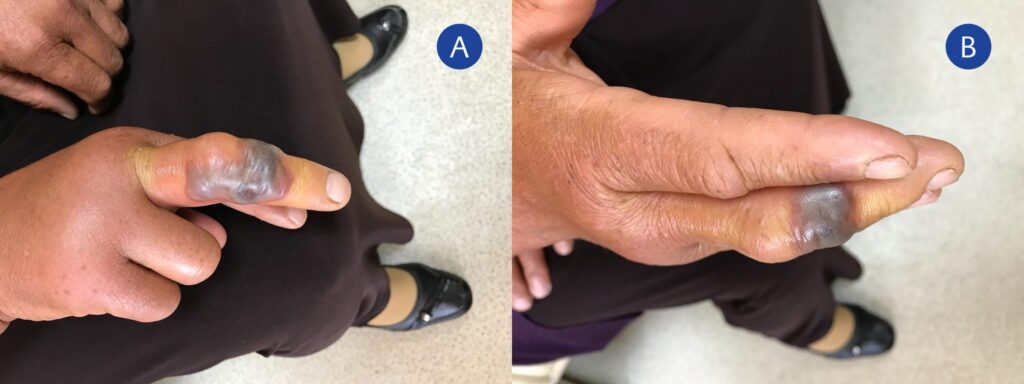Cutaneous anthrax is the most common and least severe form of anthrax, caused by Bacillus anthracis. This zoonotic infection primarily affects individuals in direct contact with contaminated animal products. If untreated, the infection can progress, leading to systemic complications.

What Is Cutaneous Anthrax?
Cutaneous anthrax occurs when Bacillus anthracis spores enter the body through cuts or abrasions in the skin. It is characterized by the formation of a necrotic lesion with a black eschar. Without treatment, the bacteria can enter the bloodstream, leading to severe complications, including sepsis.
Causes and Transmission
Bacillus anthracis spores are highly resilient and can persist in the environment for decades. The primary sources of infection include:
- Contact with contaminated animal hides, wool, or meat
- Handling infected livestock
- Exposure to spore-contaminated soil
- Bioterrorism-related release of spores
Transmission occurs through direct contact with spores; however, cutaneous anthrax is not contagious between individuals.
Symptoms of Cutaneous Anthrax
The disease progresses through distinct stages:
- Initial Stage: Small, itchy bump resembling an insect bite
- Progression: Formation of vesicles filled with clear or bloody fluid
- Eschar Formation: Development of a painless ulcer with a characteristic black center
- Edema and Lymphadenopathy: Swelling around the lesion and nearby lymph nodes
- Severe Cases: Possible septicemia and systemic involvement if untreated
Disease Progression Flowchart
Diagnosis of Cutaneous Anthrax
Accurate diagnosis relies on:
- Clinical Examination: Identifying the characteristic eschar
- Laboratory Tests:
- Gram stain and culture of lesion exudate
- Polymerase Chain Reaction (PCR) for bacterial DNA
- Enzyme-Linked Immunosorbent Assay (ELISA) for toxin detection
Treatment and Management
Antibiotic Therapy
Prompt antibiotic treatment prevents systemic complications. First-line options include:
- Ciprofloxacin (500 mg orally every 12 hours for 7-10 days)
- Doxycycline (100 mg orally every 12 hours for 7-10 days)
For severe or systemic cases, intravenous antibiotics such as penicillin or clindamycin may be required.
Supportive Care
- Wound management and antiseptic dressings
- Pain relief medications if necessary
- Monitoring for signs of systemic spread
Prevention Strategies
Prevention primarily involves reducing exposure to Bacillus anthracis spores:
- Vaccination for high-risk individuals (e.g., veterinarians, military personnel)
- Protective Gear when handling potentially contaminated materials
- Proper Disposal of infected animal carcasses
- Decontamination of exposed environments with sporicidal agents
Potential Complications
If left untreated, cutaneous anthrax may lead to:
- Sepsis: Widespread infection causing organ failure
- Meningitis: Bacterial spread to the central nervous system
- Death: Rare but possible in untreated cases (fatality rate ~20%)

